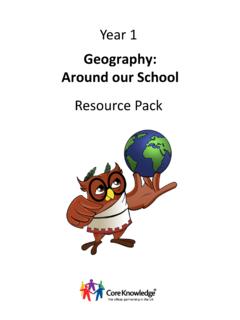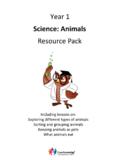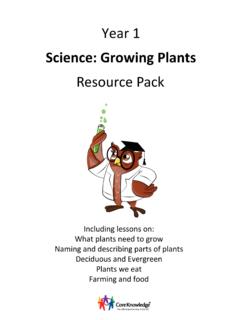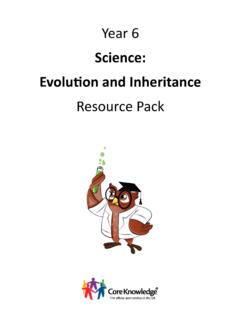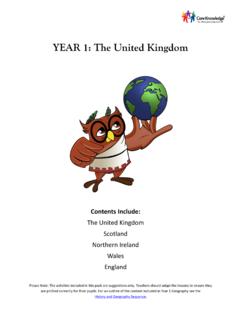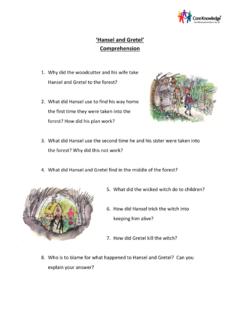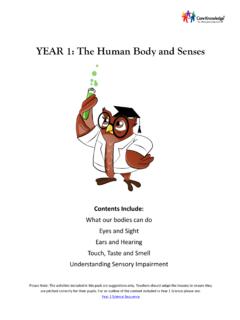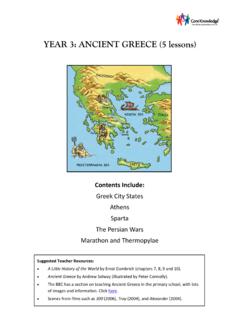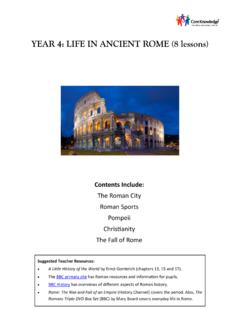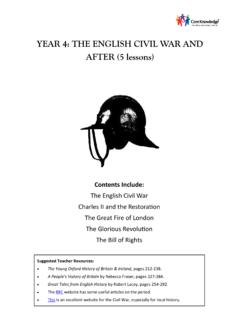Transcription of YEAR 1: Seasons and Weather - Core Knowledge UK
1 year 1: Seasons and Weather Contents Include: The four Seasons Tools to record the Weather Making graphs Clouds Weather forecasts Weather around the world Please Note: The activities included in this pack are suggestions only. Teachers should adapt the lessons to ensure they are pitched correctly for their pupils. For an outline of the content included in year 1 Science please see: Core Knowledge Science Sequence Lesson 1: Seasons and Weather This lesson is the first in a series about the Seasons and Weather .
2 By the end of this unit of work children should be able to describe Weather types including wind , rain, sun, fog and snow. children should be able to describe each season and the associated Weather conditions. Weather can be understood as the state of the atmosphere at a given time. This contrasts to climate, which describes average Weather conditions over a longer period of time. Weather is caused by interactions amongst various atmospheric factors including heat energy, moisture, air pressure and wind .
3 Temperature, humidity, precipitation and wind direction are all determined by what is happening in the atmosphere at a given time. In Britain we have a temperate maritime climate which means the Weather we experience is influenced by the sea, in our case the Atlantic Ocean. Our northern latitude and the Gulf Stream (a warm current in the Atlantic) also influence our Weather . Despite our Weather being very changeable, it is possible to identify certain characteristics of our four Seasons . Spring often has mild temperatures and can have heavy rainfall, in summer temperatures are warmer and rainfall is less frequent, in autumn temperatures cool leading to winter where temperatures are often at their lowest.
4 Winter can sometimes bring snow. Seasons occur due to the tilt of the Earth on its axis. See page 251 of What your year 1 Child Needs to Know Learning Objective Core Knowledge Activities for Learning Related Vocabulary Assessment Questions To name and describe the four Seasons . Our four Seasons are spring, summer, autumn and winter. Colder Weather comes in autumn and winter. Warmer Weather comes in spring and summer. Challenge: Our days of sunlight are longest in the summer and shortest in the winter.
5 Prior Learning Assessment: Give children a page with Seasons and Weather written in the middle. Ask children to note down (draw or write) anything they already know about Seasons and Weather . This record of their prior learning will help to inform subsequent lessons. Teach children about the four Seasons and their features. Discuss how the Weather changes throughout the four Seasons . children can record descriptions of each season (written or illustrated). Challenge: Demonstrate how the tilt of the Earth s axis means that we have more sunlight during the summer than the winter.
6 children should begin to understand that we have more sunlight in the summer and less in the winter. season seasonal spring summer autumn winter warm cool wind rain sun fog snow axis orbit tilt Can you describe the season of summer in England? Compare summer and winter in England. Which season would be ideal for a BBQ and why? Describe something you might notice in a forest during autumn. Resources: Teacher Knowledge : Why we have Seasons - Woodlands Junior School (includes a diagram of how the tilt of the Earth s axis creates our Seasons .)
7 Name: _____ Date: _____ LO: To name and describe the four Seasons . Describe the four Seasons : _____ _____ _____ _____ _____ Lesson 2: Tools to record the Weather This lesson will introduce three tools that can be used to record different kinds of Weather . children will learn about the rain gauge, wind vane and thermometer. If possible children should have hands on experience either making or using tools to measure the Weather . To provide children with opportunities to apply their Knowledge , regular Weather observations should be recorded throughout this unit.
8 A rain gauge is a simple tool that collects rainfall over a set period of time. Early records show that the Ancient Greeks recorded rainfall in 500 BC, followed shortly by people in India using bowls to record rainfall in 400 BC. A wind vane indicates which way the wind is blowing and is often positioned on the highest point of a building. Traditionally, a cockerel is used on a Weather vane alongside arrows pointing north, south, east and west. The earliest known Weather vane depicted the Greek god Triton and was fixed to the top of the Tower of Winds, built in Athens in 48 BC.
9 A thermometer measures temperature using a substance that expands as temperature increases. In the past thermometers often contained mercury; however for safety reasons, alcohol with red colorant is now widely used. See page 120 of What your year 1 Child Needs to Know Learning Objective Core Knowledge Activities for Learning Related Vocabulary Assessment Questions To know that tools are used to gather information about the Weather . A rain gauge measures how much rain has fallen. A wind vane shows which way the wind is blowing.
10 A thermometer measures the temperature. Throughout this unit of work, children regularly use tools to gather information about the Weather . A system can be set up for children to share the responsibility of data collection and recording. During this lesson, children can either design and make tools to record data about the Weather , or handle some ready-made tools before writing a description of how each one works. Ideally, opportunities to take Weather recordings should be taken throughout the year .
